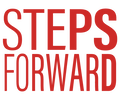|
Benchmarks
|
|
The work of inclusion is both complicated (understanding the rhythms and routines of student life) and complex (understanding how negative devaluing beliefs can pull students away from an authentic experience). The work does not have a defined work plan or instruction manual, it is work with real people in the real world. This comes with all kids of opportunities and challenges and when we are honest with ourselves, we actually do not know how to achieve the vision of inclusion all that well. This is where benchmarks come it. The following benchmarks, developed by Inclusion Alberta, are based on over 25 years of grounded experience working within post-secondary contexts. The bench marks help to guide us forward and ensure that we are constantly evolving and ensuring a quality of practice over time. As mentioned, the work is countercultural, so when left unchecked we are vulnerable to slip back into ways of supporting students that reproduce barriers to inclusion.
As an inclusion facilitator, you should refer to these benchmarks often, discuss them with co-workers and find critical friends who can point out your own blindspots. Benchmarks:
The full benchmarks are described in the following evaluation tool at the bottom of this page. Some examples of questions that come up when we review the benchmarks are provided as examples here:
Next: Role of the Facilitator
|
